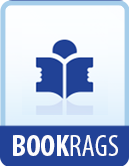We discussed the meaning of childish play, and deplored the lack of good and worthy national nursery plays. Passing then to Froebel’s “Mother-Play,” we found that the very heart of his educational idea lies in the book, and that it serves as a guide for mothers whose babies are yet in their arms, as well as for those who have little children of four or five years under their care.
We found that in Froebel’s plays the mirror is held up to universal life; that the child in playing them grows into unconscious sympathy with the natural, the human, the divine; that by “playing at” the life he longs to understand, he grows at last into a conscious realization of its mysteries—its truth, its meaning, its dignity, its purpose.
We found that symbolic play leads the child from the symbol to the truth symbolized.
We discovered that the carefully chosen words of the kindergarten songs and games suggest thought to the child, the thought suggests gesture, the melody begets spiritual feeling.
We discussed the relation of body and mind; the effect of bodily attitudes on feeling and thought, as well as the moulding of the body by the indwelling mind.
Froebel’s playthings are as significant as his plays. If you examine the materials he offers children in his “gifts and occupations,” you cannot help seeing that they meet the child’s natural wants in a truly wonderful manner, and that used in connection with conversations and stories and games they address and develop his love of movement and his love of rhythm; his desire to touch and handle, to play and work (to be busy), and his curiosity to know; his instincts of construction and comparison, his fondness for gardening and digging in the earth; his social impulse, and finally his religious feeling.
Froebel himself says if his educational materials are found useful, it cannot be because of their exterior, which is as simple as possible, and contains nothing new; but their worth is to be found exclusively in their application. If you can work out his principles (or better ones still when we find better ones) by other means, pray do it if you prefer; since the object of the kindergartner is not to make Froebel an idol, but an ideal. He seems to have found type-forms admirable for awaking the higher senses of the child, and unlike the usual scheme of object lessons, they tell a continued story. When the object-method first burst upon the enraptured sight of the teacher, this list of subjects appeared in a printed catalogue, showing the ground of study in a certain school for six months:—
“Tea, spiders, apple, hippopotamus, cow, cotton, duck, sugar, rabbits, rice, lighthouse, candle, lead-pencil, pins, tiger, clothing, silver, butter-making, giraffe, onion, soda!”
Such reckless heterogeneity as this is impossible with Froebel’s educational materials, for even if they are given to the child without a single word, they carry something of their own logic with them.




